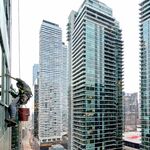Mapping America's Bike Commuters
- Richard Florida
May 19, 2017
(Disclosure: I’m an avid cyclist who owns both serious road bikes and Dutch-style urban commuter bikes, including a refurbished Raleigh Tourist DL-1.)
Bicycles in cities are one of the very hottest of hot-button urban issues—right up there with gentrification itself,
which isn’t unrelated, as we’ll see. On the one side are the urban biking optimists, who extol the benefits of bikes in cities and argue that two-wheeled transport is the source of many good things, from less pollution and energy use to more walkable neighborhoods and happier, healthier people. On the other are the urban biking pessimists who see bikes, bike lanes and bike share systems as symbols and promulgators of gentrification, housing unaffordability, and deepening urban divides.
For all the talk about how bikes are taking over cities and even getting the upper hand in the fabled War on Cars, the reality is that bikes are far and away the least common way people get to work. We seem to be arguing about bikes a lot more than we ride them. (Detailed data on more general bike use is skimpy, so we used commuting data compiled by the Census through their
American Community Surveyfrom 2011 to 2015 is the best we have—though the League of American Bicyclists has
some data for city cyclingfrom 2014).
Here’s a mapshowing where bike commuters make up the largest percentage share of commuters and the largest raw numbers of riders, made for us by the geospatial technology company,
Esri.
[...]
Here’s a reality check: Even as the number of regular bike commuters has skyrocketed by more than 60 percent from 2000 to 2013, nationally, less than one percent of commuters (0.6 percent) bike to work at least once a week.
By comparison, 86 percent of commuters drive to work. Think of it this way: There are roughly 800,000 people pedaling to work across the United States, lined up against some 120 million Americans behind the wheel. The War on Cars, if it exists, is very asymmetric.
[...continues at length with many links and charts...]












